Welcome to our blog post on Cat Owner Basics! Whether you are a new cat owner or considering getting a feline companion, this article will provide you with essential information to help you navigate the world of cat ownership with confidence.
Owning a cat can be a rewarding and fulfilling experience. However, it is crucial to understand that cats are unique creatures with their own set of needs and behaviors. By acquainting yourself with the basics of cat care and understanding what it takes to provide a loving and healthy environment for your pet, you can establish a strong foundation for your journey as a cat owner.
During this blog post, we will cover various topics related to cat ownership, starting with the basics. This introductory section aims to explain the significance of responsible pet ownership and the commitment it entails. We will also touch upon the benefits of having a cat as a companion, both for your mental well-being and home environment.
In the following sections, we will delve into practical advice on preparing your home for the arrival of a new cat, providing proper nutrition and hydration, understanding their social and emotional needs, and ensuring their overall health and well-being. We will also provide tips on finding a reputable veterinarian, selecting suitable toys and accessories, and addressing common behavioral issues.
Remember, being a cat owner involves more than simply providing food and shelter. Cats require regular interaction, mental stimulation, and a safe environment that nurtures their instincts and natural behaviors. Through consistent care and love, you can build a strong bond with your feline friend and foster a lifetime of companionship.
So let's get started! With our Cat Owner Basics guide, you will gain valuable insights and practical knowledge that will empower you to be a responsible and knowledgeable cat owner. Stay tuned for the upcoming sections, where we will delve into the specifics of cat care and help you become the best cat parent you can be.
Choosing the Right Cat (including considering adoption, breed selection, and personality traits)
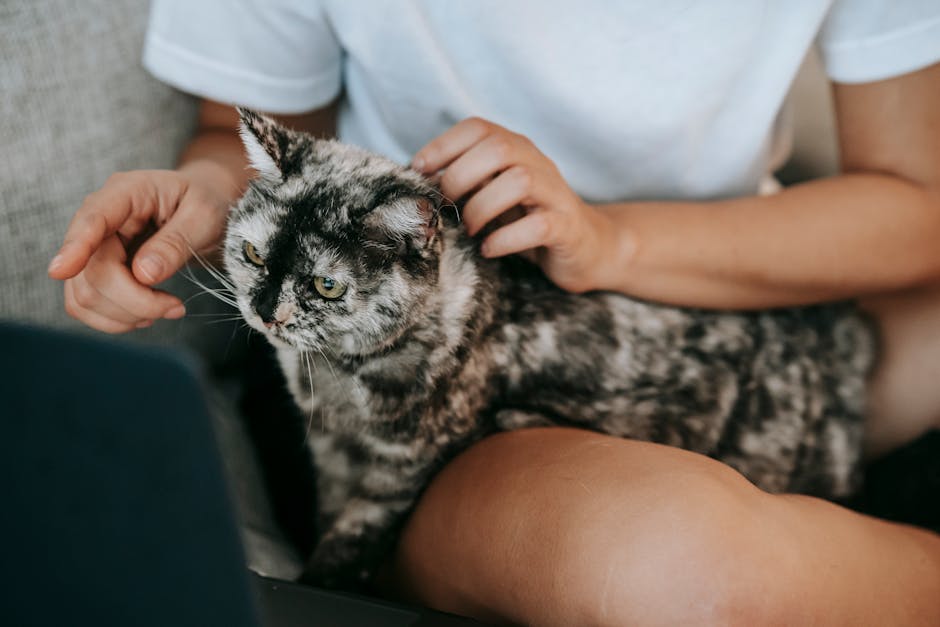
When it comes to being a cat owner, choosing the right cat is an important decision. Whether you're considering adoption or purchasing a purebred, there are several factors to consider before making your choice. Here are some key points to keep in mind when it comes to selecting the perfect feline companion:
1. Adoption: Adopting a cat from a shelter or rescue organization is a wonderful way to provide a loving home for a cat in need. Not only does it give a deserving cat a second chance at life, but it also helps to lessen the burden on overcrowded shelters. When considering adoption, take the time to understand the cat's background and any additional needs or challenges they may have. Shelter staff can provide valuable insights into the cat's temperament and compatibility with other pets or children in your home.
2. Breed Selection: If you have a specific breed in mind, it's essential to research and understand its characteristics before making a decision. Different cat breeds have distinct traits, such as energy levels, grooming needs, and personality types. For example, some breeds, like the Maine Coon, are known to be friendly and sociable, while others, like the Siamese, can be more vocal and demanding. Consider how these traits align with your own lifestyle and preferences to ensure a harmonious match.
3. Personality Traits: Every cat has its own unique personality, regardless of breed. When choosing a cat, spend some time interacting with them to gauge their temperament and behavior. Look for signs of friendliness, playfulness, and adaptability. Keep in mind that kittens may display different behaviors than adult cats, so consider their potential growth and development as well. Understanding a cat's personality traits will help you determine if their disposition aligns with your expectations and living situation.
Remember, choosing the right cat is a long-term commitment. It's essential to select a cat that matches your lifestyle, needs, and abilities to provide the best care and environment possible. Whether you decide to adopt or purchase from a breeder, taking the time to research, reflect, and interact with different cats will increase the chances of finding your perfect feline companion.
Creating a Cat-Friendly Home (tips for cat-proofing, providing hiding spots, and setting up litter boxes)
Creating a Cat-Friendly Home
When bringing a new cat into your home, it is important to ensure that your environment is safe and conducive to their needs. Here are some tips to help you create a cat-friendly home that will provide comfort and security for your new feline friend.
1. Cat-proofing: Take the time to assess your home for any potential hazards or items that may be harmful to your cat. Secure loose cords, ensure windows and balcony areas are protected, and remove any toxic plants or substances from their reach. By cat-proofing your home, you can prevent accidents and ensure their safety.
2. Providing hiding spots: Cats are naturally curious and like to have their own private spaces. Create designated hiding spots throughout your home where your cat can retreat to when they need some peace and quiet. This can be a cozy cat bed tucked away in a quiet corner or a cat tree where they can climb and observe their surroundings.
3. Setting up litter boxes: It is crucial to have an appropriate number of litter boxes available for your cat. Aim to have one litter box per cat, plus an extra one if you have multiple feline companions. Place the litter boxes in quiet and easily accessible areas. Avoid high-traffic locations or areas where your cat might feel trapped. Regularly clean and maintain the litter boxes to ensure your cat's hygiene and comfort.
4. Providing scratching posts: Cats need an outlet for their natural instinct to scratch. To protect your furniture from becoming a scratching post, provide your cat with appropriate scratching posts or boards. Place them strategically throughout your home, making them easily accessible and attractive for your cat to use.
5. Ensuring environmental enrichment: Cats are curious and playful animals. Engage them in stimulating activities by providing toys, puzzles, and interactive playtime. This will help them stay mentally and physically active, reducing the likelihood of destructive behavior or boredom.
By following these essential tips for creating a cat-friendly home, you can ensure that your new feline companion feels safe, comfortable, and loved. Remember, a happy and contented cat makes for a harmonious home.
Meeting Your Cat's Basic Needs (feeding, providing fresh water, and having a comfortable sleeping area)

Feeding your cat: A well-balanced diet is essential for your cat's overall health and well-being. Provide them with high-quality cat food that meets their nutritional requirements, avoiding human food as it may be harmful to them. Ensure you feed your cat on a consistent schedule, keeping portions appropriate for their age, size, and activity level. Consult with your veterinarian to determine the best diet plan for your feline friend.
Supplying fresh water: Cats need access to fresh, clean water at all times. Provide them with a shallow water bowl that is easily accessible and ensure it is regularly replenished. Cat owners often underestimate the importance of hydration, but keeping your cat well-hydrated can prevent several health issues, including urinary tract problems.
Creating a comfortable sleeping area: Cats love their beauty sleep, and providing them with a cozy sleeping area is essential. Invest in a comfortable cat bed or provide soft blankets where they can rest and relax undisturbed. Cats enjoy having their own space, so placing the sleeping area in a quiet and peaceful corner of your home will make them feel safe and secure. Additionally, consider providing a scratching post or cat tree near their sleeping area to fulfill their natural instinct to scratch and climb.
Meeting these basic needs will not only ensure your cat stays healthy and content but will also strengthen the bond between you and your feline companion. Remember, each cat is unique, so observing their behavior and preferences will help you understand their individual needs better. By prioritizing their feeding, hydration, and sleeping requirements, you're setting the foundation for a happy and thriving cat.
Understanding Cat Behavior (common cat behaviors and how to interpret them)
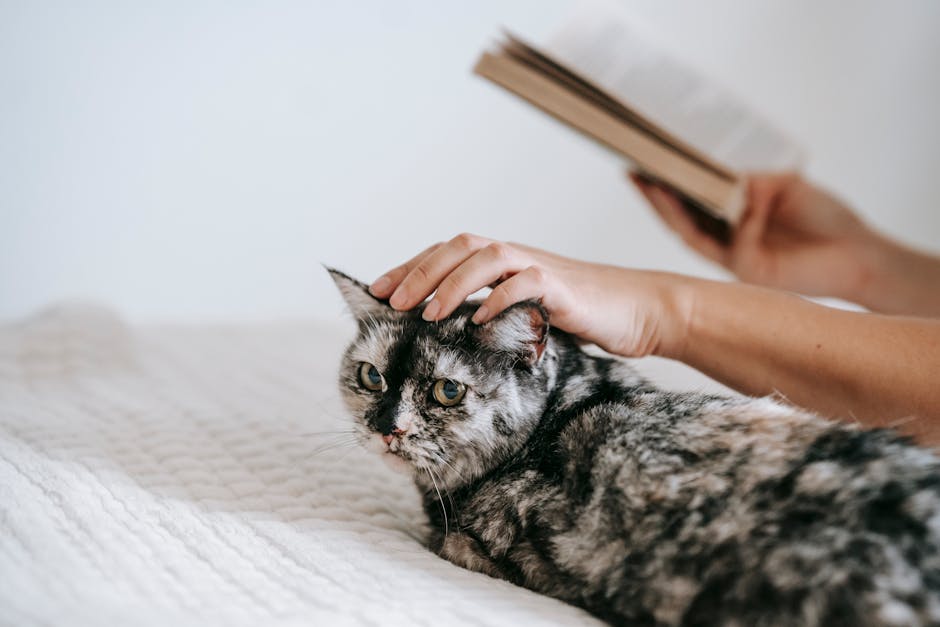
Understanding Cat Behavior: Cats are fascinating creatures that have their unique ways of communicating and expressing themselves. Being able to understand their behavior can help us establish a stronger bond with our feline companions. 1. Tail Position: The position of a cat's tail can provide valuable insights into their mood and intentions. A relaxed and upright tail signifies a content and friendly cat, while a tail held low or tucked between the legs indicates fear or submissiveness. On the other hand, a tail twitching rapidly from side to side can be a sign of aggression or irritation.
2. Purring: Purring is not always an indication of a happy cat. While most commonly associated with contentment, cats may also purr when they are anxious, in pain, or seeking attention. Observe the context in which your cat purrs, paying attention to other body language cues, to accurately interpret their state of mind.
3. Body Posture: A cat's body posture reveals a lot about how they are feeling. An arched back and puffed-up fur indicate aggression or fear, while a relaxed and loose posture signifies contentment. If your cat is crouched low to the ground with dilated pupils, it could indicate a playful or hunting mood.
4. Vocalizations: Cats use a variety of vocalizations to communicate their needs and emotions. A soft and rhythmic meow is often a greeting or a request for attention, while a loud and intense meow can indicate frustration or hunger. Growling, hissing, or yowling typically represent fear, aggression, or pain.
5. Scratching: Cats have a natural instinct to scratch, which serves multiple purposes. Scratching helps them mark their territory, sharpen their claws, and stretch their muscles. Providing appropriate scratching posts and regularly trimming their nails can redirect this behavior to suitable areas and protect your furniture.
6. Litter Box Behavior: Monitoring your cat's litter box habits is crucial for their health and well-being. Changes in frequency, consistency, or location of urination/defecation can signal potential health issues. Moreover, avoiding the litter box or exhibiting signs of distress while using it might be signs of a medical problem or anxiety.
Remember, each cat is unique, and their behavior can vary based on individual personality traits and past experiences. Observing and understanding your pet's behavior will help you build a stronger connection and address any potential issues promptly. If you have concerns about your cat's behavior, consult a veterinarian or a qualified animal behaviorist for further assistance.
Grooming and Hygiene (basic grooming practices, such as brushing and nail trimming)
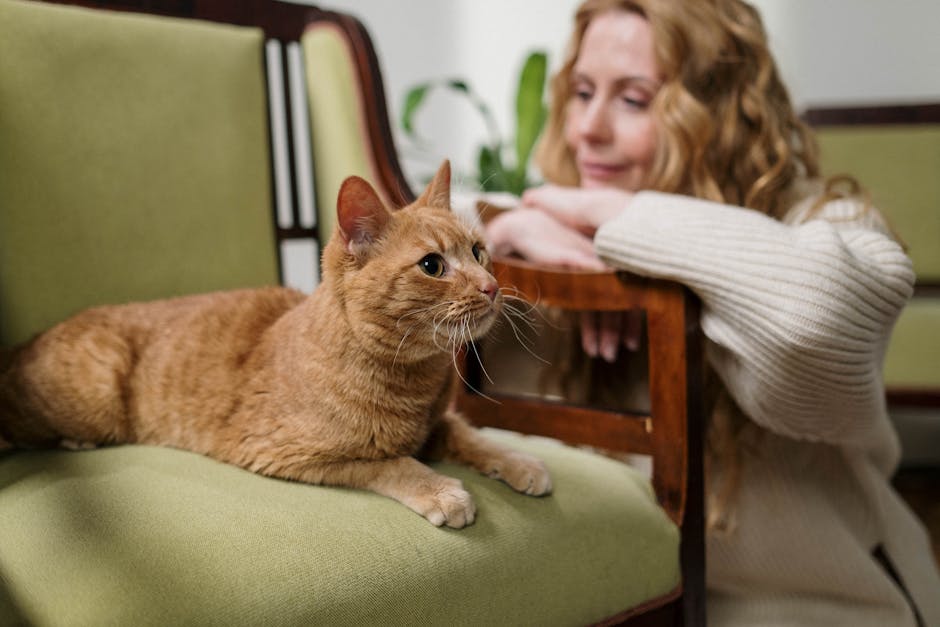
Maintaining proper grooming and hygiene for your furry companion is an essential aspect of responsible cat ownership. Regular grooming not only helps keep your cat looking their best, but it also plays a crucial role in promoting their overall health and well-being. In this section, we will discuss some basic grooming practices that every cat owner should be familiar with.
1. Brushing: Regular brushing helps to prevent hairballs, keeps your cat's coat shiny and free from mats, and stimulates blood circulation. The frequency of brushing will depend on the length and type of your cat's coat. Long-haired breeds usually require daily brushing, while short-haired cats can be brushed once or twice a week. Choose a brush or comb appropriate for your cat's fur type, and gently brush in the direction of hair growth, being extra careful around sensitive areas such as the belly and tail. Make brushing sessions a positive experience by rewarding your cat with treats or praise.
2. Nail Trimming: Trimming your cat's nails is essential to prevent them from becoming overgrown or snagging on objects. Cats' nails are retractable and naturally sharpen as they scratch, so regular trimming helps maintain them at an appropriate length. Before you begin, get your cat accustomed to having their paws handled by gently touching them and offering treats as a reward. Invest in a pair of specifically designed cat nail clippers or a pet nail grinder. Take caution not to cut into the quick, a vein that runs into the nail, as it can cause bleeding and discomfort. If you're unsure about nail trimming, consult your veterinarian or a professional groomer for guidance.
3. Dental Care: Oral hygiene is often overlooked but essential for your cat's overall health. Regular dental care helps prevent gum diseases, tooth decay, and bad breath. Introduce teeth brushing gradually, using a toothbrush and toothpaste formulated specifically for cats. Start by allowing your cat to smell and taste the toothpaste, then gently introduce the toothbrush, gradually progressing to brushing their teeth in a circular motion. It's recommended to brush your cat's teeth daily, but even a few times a week can make a significant difference.
4. Ear Cleaning: Checking and cleaning your cat's ears regularly is important to prevent infections and ear mites. Look out for excessive earwax, redness, swelling, or a foul odor. Use a veterinary-approved ear cleaner and cotton balls to gently clean the outer ear area, being careful not to insert anything into the ear canal. If you notice any signs of discomfort or suspect an ear infection, consult your veterinarian for a proper diagnosis and treatment plan.
Remember, grooming is an excellent opportunity for bonding with your cat. Make sure to approach grooming sessions with patience, be gentle, and use positive reinforcement to make it a positive experience for your feline friend. If you are unsure about any grooming techniques or need assistance, don't hesitate to seek advice from a professional groomer or your veterinarian.
Cat Health and Veterinary Care (vaccinations, regular check-ups, and preventing common health issues)
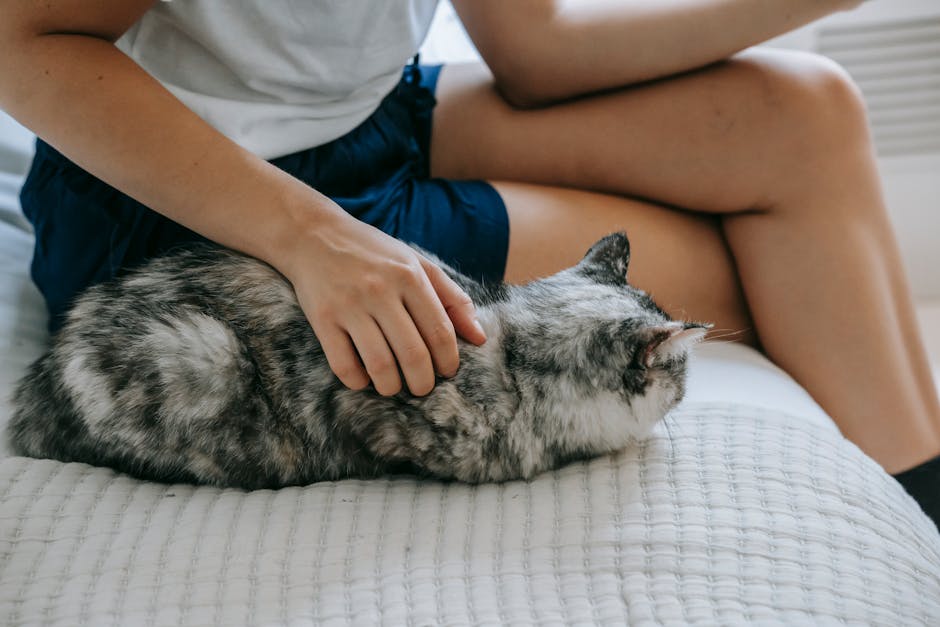
As a responsible and caring cat owner, it's essential to prioritize your feline friend's health and veterinary care. Regular vaccinations, routine check-ups, and preventive measures play a crucial role in ensuring your cat's well-being and longevity. Here are some key aspects of cat health and veterinary care that every cat owner should be aware of:
1. Vaccinations: Vaccinations are integral in protecting your cat from various infectious diseases. Ensure that your cat receives the core vaccinations recommended by veterinarians. These typically include vaccines against feline panleukopenia (distemper), feline herpesvirus, calicivirus, and rabies. Depending on your cat's lifestyle and exposure risk, additional vaccines may be necessary, such as those for feline leukemia virus (FeLV) or feline immunodeficiency virus (FIV). Schedule regular vaccination appointments with your veterinarian to keep your cat's immunizations up to date.
2. Regular Check-ups: Just like humans, cats require routine check-ups with a veterinarian to monitor their overall health and identify any potential issues early on. During these appointments, the vet will conduct a comprehensive physical examination, check your cat's weight, heart rate, and overall body condition, and discuss any concerns you may have. Through regular check-ups, your vet can detect and address health problems before they become serious, prolonging your cat's life and ensuring their well-being.
3. Preventive Measures: Taking preventive measures can significantly reduce the likelihood of common health issues in cats. For instance, providing a balanced diet that meets your cat's nutritional requirements is crucial for their overall health and prevents obesity-related problems. Regular grooming sessions, including brushing and nail trimming, help maintain your cat's coat and prevent skin issues or painful matting. Additionally, it's important to keep your cat's living environment clean, ensuring proper litter box hygiene and eliminating potential hazards.
4. Dental Care: Dental health is often overlooked but plays a huge role in a cat's overall well-being. Establishing good oral hygiene practices, such as regular brushing with cat-specific toothpaste and providing dental treats or toys, can help prevent dental diseases like periodontal disease or tooth decay. Regular dental check-ups with your veterinarian and professional dental cleanings, if necessary, are vital to ensure your cat's dental health.
Remember, maintaining your cat's health and well-being requires consistent efforts and collaboration with your veterinarian. They can provide personalized advice based on your cat's individual needs and lifestyle. By prioritizing vaccinations, scheduling routine check-ups, implementing preventive measures, and addressing dental care, you are laying a solid foundation for your cat's health, happiness, and longevity.
Ensuring Safety and Preventing Accidents (avoiding toxic plants, hazards, and securing windows and balconies)

As a responsible cat owner, ensuring the safety and well-being of your furry companion should be a top priority. By taking proactive steps to prevent accidents and create a safe environment, you can provide your cat with a happy and secure home. Here are some essential measures to consider:
1. Identifying and Avoiding Toxic Plants: Cats are known for their curious nature, and they often find themselves exploring every nook and cranny of their surroundings, including your indoor and outdoor plants. However, some plants can be toxic to cats if ingested. It is crucial to research and identify the plants that are harmful to felines and remove them from your home or place them out of your cat's reach. Common examples of toxic plants include lilies, tulips, and certain varieties of ivy. By providing a cat-friendly environment devoid of harmful plants, you can prevent potential poisoning incidents.
2. Eliminating Hazards and Potential Dangers: Cats are acrobatic creatures known for their ability to climb and jump onto various surfaces. It is crucial to eliminate potential hazards that could pose a threat to their safety. Secure loose electrical cords and wires to prevent chewing or entanglement accidents. Store household chemicals, cleaning supplies, and medications in locked cabinets to prevent accidental ingestion. Keep small objects, such as rubber bands or paper clips, out of their reach to avoid choking hazards. By meticulously inspecting your home for potential dangers and taking appropriate preventive measures, you can minimize accident risks.
3. Securing Windows and Balconies: Cats are naturally inclined to explore the outdoors, and the allure of an open window or balcony can be irresistible to them. However, it is essential to take precautions to avoid falls or injuries. Ensure that all windows have sturdy and secure screens or install safety nets specifically designed for cats. Balconies should also be secured with appropriate barriers or mesh to prevent accidental falls. By taking these measures, you can provide your cat with supervised access to fresh air while ensuring their safety at all times.
Remember, accidents can happen even with the most cautious cat owners. Regularly assess your cat's environment, be vigilant, and promptly address any potential safety issues that arise. By creating a secure and hazard-free space for your beloved feline friend, you can enjoy peace of mind, knowing that you are providing them with a safe and happy home.
Stimulating Your Cat's Mind and Body (providing playtime, interactive toys, and scratching posts)
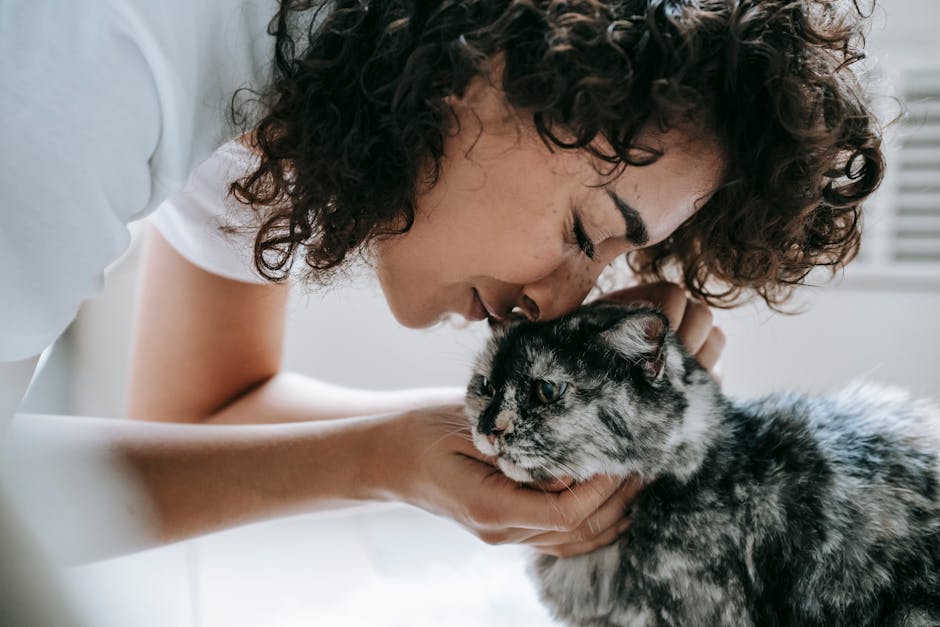
Keeping your cat's mind and body stimulated is essential for their overall well-being. While cats may seem independent, they require mental and physical stimulation to prevent them from becoming bored or developing behavioral issues. Here are some tips on how to stimulate your cat's mind and body:
1. Playtime: Regular play sessions are a great way to engage your cat's mind and provide them with much-needed exercise. Use interactive toys, such as feather wands or laser pointers, to encourage your cat to chase, pounce, and jump. Make sure to vary the toys and play styles to keep them interested. Aim for at least two play sessions of 10-15 minutes each per day.
2. Interactive toys: In addition to playtime with you, provide your cat with interactive toys that they can play with on their own. Puzzle toys that dispense treats or interactive feeder balls can keep their minds busy and provide a challenge. These toys encourage your cat to problem-solve and use their natural hunting instincts, which helps keep their minds sharp and focused.
3. Scratching posts: Cats have a natural urge to scratch, which helps them stretch, keep their claws healthy, and mark their territory. Provide your cat with multiple scratching posts or boards throughout your home, ideally in areas where they spend the most time. Opt for sturdy, tall scratching posts that allow your cat to stretch fully. Encourage them to use the posts by sprinkling some catnip or placing a toy near it.
4. Rotating toys: Just like humans, cats can get easily bored with the same toys day after day. Introduce new toys regularly to keep them engaged and interested. Store away some of their toys and rotate them every few weeks to bring back the excitement. Adding variety will prevent them from losing interest and encourage them to stay mentally and physically active.
Remember, each cat is unique, so try different techniques and toys to see what works best for your feline friend. By providing playtime, interactive toys, and scratching posts, you'll stimulate your cat's mind and body, promoting a happy and healthy lifestyle for them.




